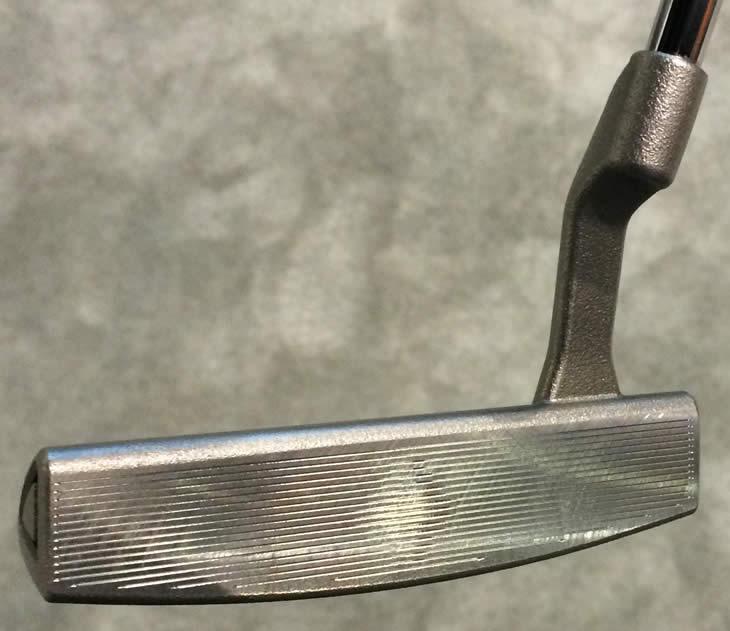On the heels of the United States Golf Association’s (USGA) announcement that it will adopt Rule 14-1b, a rule that forbids golfers to anchor their clubs–primarily putters–when making a stroke (the PGA had previously made a similar announcement), the golf equipment manufacturer, Ping, has just produced a new putter using 3D design and printing technology that could improve control and accuracy, making support tactics like anchoring less relevant than ever. And that’s really just one benefit of using 3D printing or additive manufacturing for producing high quality golf clubs.
Ping’s Director of Engineering, Paul Wood, a maker himself who uses a MakerBot 3D printer at home and has a doctoral degree in Materials, realized that 3D printing might well be the perfect solution for producing customized and otherwise more refined, high-quality golf clubs. Rather than using conventional methods to produce golf clubs, casting and then welding the pieces together, creating a vulnerable weld line, the 3D printing process eliminates the weak point.
Ping’s first attempt at designing and 3D printing a club was with a G25 iron for long distances. When it was tested with players, they couldn’t tell the difference between the conventional, cast G25 and the 3D printed one, such was the high quality of the new club.
Next came the putter, which was a tremendous success. Wood noted that, at the end of the 3D printing process, some finishing work is required so the putter gets a light blast to clean it up, but it is otherwise remarkably close to perfect, including the finely detailed stripes.
While Ping doesn’t feel it has developed its 3D printing process to the extent that they’d like to offer the putter more broadly, Ping intends to offer the CAD designed and 3D printed putter as “a VIP experience.” Wood explained, “This is a high end program for a select number of products a year as we keep working on the R&D and pushing the boundaries of what we can do.”
Ping’s plan is to provide buyers of the putter with a custom fitting experience in which they spend time with a designer, figure out what the individual player’s needs and preferences are, and go from there to customize their 3D-printed putter. Eventually, Ping hopes to provide a customization service that would be accessible via the internet from anywhere in the world, but for the moment they’re concentrating on developing the design and additive manufacturing processes much further, so personalizing the putters will still happen, well, in person.
Wood estimates that the price of the 3D-printed putter will be in the range of around £5000 to 6000 (about $7,700 to $9,200) or so. He added that, because the technology and process are still quite new, the price will fall in that higher range. As the 3D manufacturing technology is further developed, of course, prices will come down and the company will make the 3D-printed products more widely available.
Currently, the 3D printer used to create the putter costs about $1 million, so it will be a while–Wood estimates 5 or 10 years–before this technology is commonplace. He noted that the material itself isn’t as costly as one would imagine as it is acquired in powder form and Ping can used “17-4 stainless steel.” Right now, it takes about 24 hours just to produce the head of the putter but, Wood pointed out, “as lasers get quicker then that time will come down” and, in the long run, it’s still much faster than the conventional production process, which takes at least six weeks.
Wood thinks that 3D printing may never be the ideal manufacturing process for shafts, but for the solid heads, it’s great–the hollow heads are more challenging, as you can imagine. One exciting aspect of designing and printing in 3D is an added precision. For instance, Ping aspires to specify the loft to surprisingly small increments. “The question is how far you need to take it, will you ever need to get to two decimal places in terms of loft,” added Wood, “probably not, but certainly dialing it in as much as we cna is always going to be important, especially to the elite players.” In this case, the added advantage of a precisely designed and manufactured putter–thanks to 3D printing–would be completely within the rules.
Subscribe to Our Email Newsletter
Stay up-to-date on all the latest news from the 3D printing industry and receive information and offers from third party vendors.
Print Services
Upload your 3D Models and get them printed quickly and efficiently.
You May Also Like
The Dental Additive Manufacturing Market Could Nearly Double by 2033, According to AM Research
According to an AM Research report from 2024, the medical device industry, specifically in dentistry, prosthetics, and audiology, is expected to see significant growth as these segments continue to benefit from...
Heating Up: 3D Systems’ Scott Green Discusses 3D Printing’s Potential in the Data Center Industry
The relentless rise of NVIDIA, the steadily increasing pledges of major private and public investments in national infrastructure projects around the world, and the general cultural obsession with AI have...
AM Research Webinar Explores Continuum’s Sustainable Metal Additive Manufacturing Powders
Metal additive manufacturing (AM) powder supplier Continuum Powders is working to develop solutions that empower industries to reduce waste and optimize their resources. An independent life cycle assessment (LCA) of...
3D Printed Footwear Startup Koobz Lands $7.2M in Seed Round
California-based Koobz is focused on reshoring the U.S. footwear supply chain with advanced manufacturing processes, including 3D printing. The startup just announced that it has added $6 million to its...


































